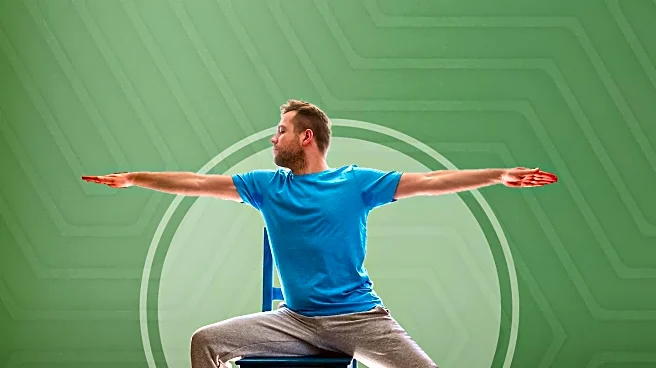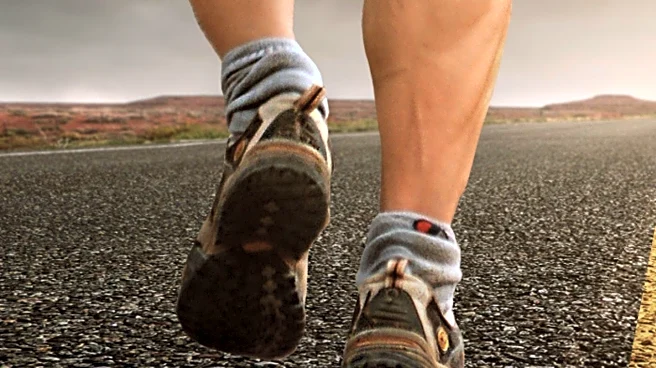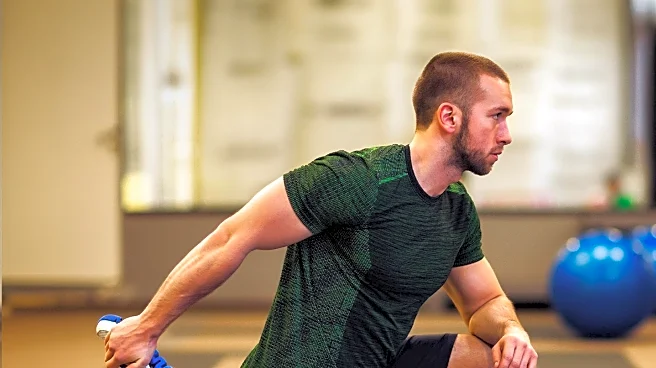What is the story about?
What's Happening?
Elma Panagaki, a yoga instructor at Bay Club, has shared insights on testing and improving hip mobility, a common issue due to modern sedentary lifestyles. Panagaki explains that prolonged sitting can lead to tightness and immobility in the hips, affecting overall comfort and increasing the risk of injury. She suggests simple tests such as sitting cross-legged and performing deep squats to assess hip mobility. If the knees are high or the heels lift during these exercises, it indicates tight hips. Panagaki recommends gentle yoga flows, including windshield wiper movements, child's pose to striking cobra transitions, and low lunge to half split exercises, to enhance hip flexibility and strength.
Why It's Important?
Improving hip mobility is crucial for maintaining physical health and preventing injuries. Tight hips can lead to discomfort and limit movement, impacting daily activities and overall well-being. By incorporating mobility exercises into regular routines, individuals can enhance their posture, reduce injury risks, and improve their quality of life. This approach not only benefits those with sedentary lifestyles but also athletes and fitness enthusiasts who require optimal joint function for performance. The emphasis on mobility training reflects a growing trend in fitness towards functional movement and holistic health.
What's Next?
As awareness of the importance of mobility training grows, more individuals may seek guidance from fitness professionals like yoga instructors to incorporate these practices into their routines. Fitness centers and wellness programs might expand their offerings to include specialized mobility classes. Additionally, there could be an increase in online resources and workshops focusing on mobility improvement, catering to a broader audience seeking to enhance their physical health from home.
Beyond the Headlines
The focus on mobility training highlights a shift in fitness culture towards preventive health measures. By addressing mobility issues early, individuals can potentially avoid chronic pain and long-term health complications. This approach aligns with a broader movement towards personalized fitness and wellness strategies, emphasizing the importance of understanding one's body and its unique needs.
AI Generated Content
Do you find this article useful?











